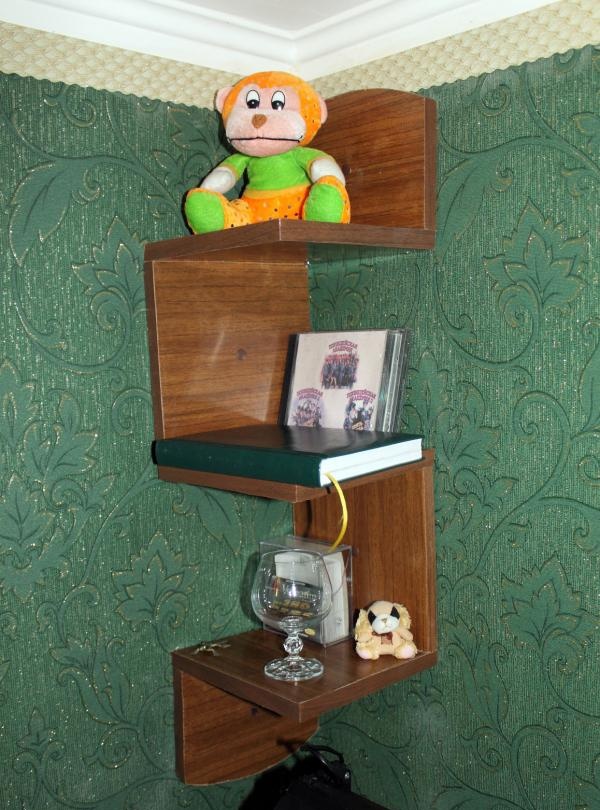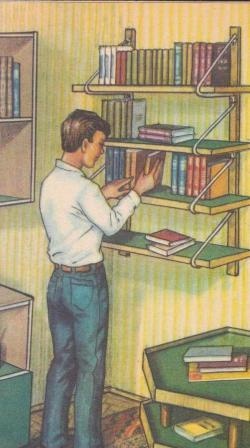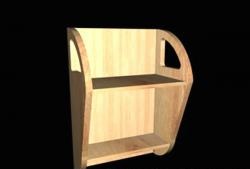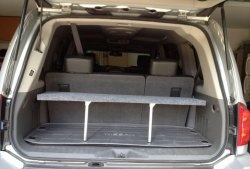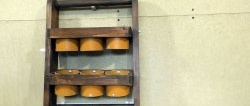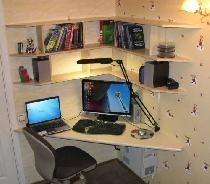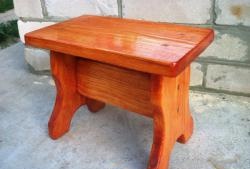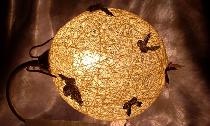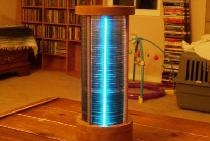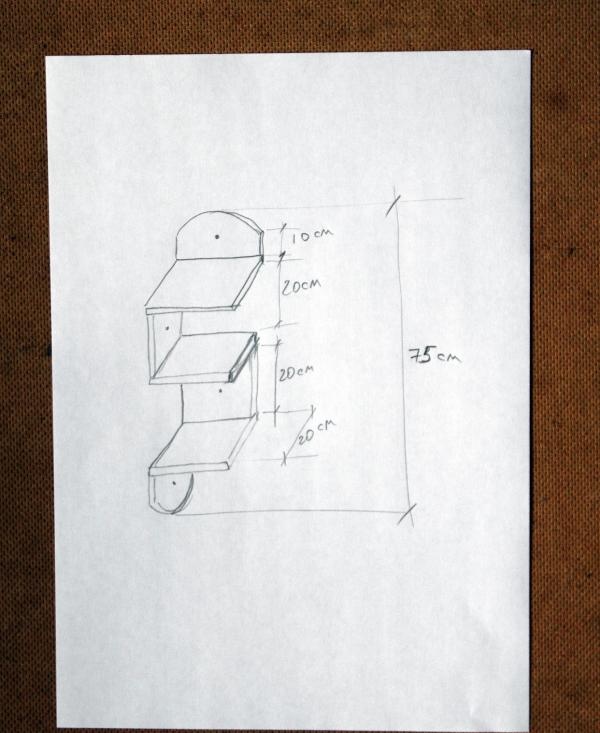
The most popular materials for making shelves are wood, furniture board, MDF, laminated chipboard, etc. Sometimes shelves are made from improvised materials - laminate, plastic or even drywall. Let's not change traditions and use furniture board as a raw material. To work you will need a jigsaw, a drill, various fasteners, a tape measure and a pencil. First you need to make a sketch of the future shelf for clarity of work processes.
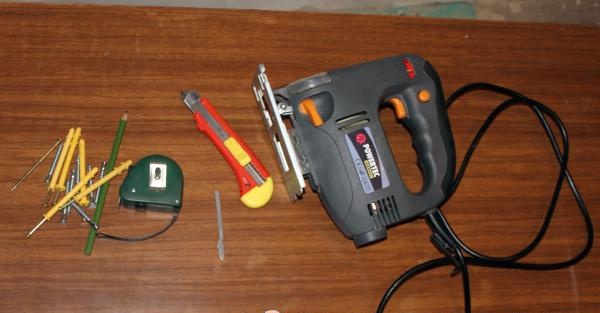
The shelf will be about 70 cm high with three sections. It will be fastened through the vertical elements using dowel-nails, and the parts will be connected to each other with confirmations.

The first thing you need to do is mark all the parts on the plate. This is usually done with a pencil, but if the slab has a dark surface, then the pencil mark will not be noticeable; in this case, you can use a knife. You need to use the blade, without pressing too hard, to draw it along the cut line, after which a thin, white, noticeable line will appear, along which it will be easy to cut.
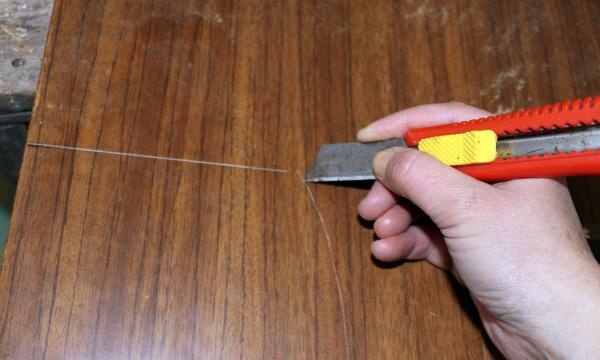
You can use a jigsaw to cut out shelf elements. The saw blade must have a fine tooth and be designed for woodworking. The sawing speed regulator on the jigsaw should be set to the minimum value, and the mode selection knob should be set to “0”. To facilitate the assembly of the shelf, it is necessary to number the parts in the drawing, and then put the corresponding values on the structural elements themselves.
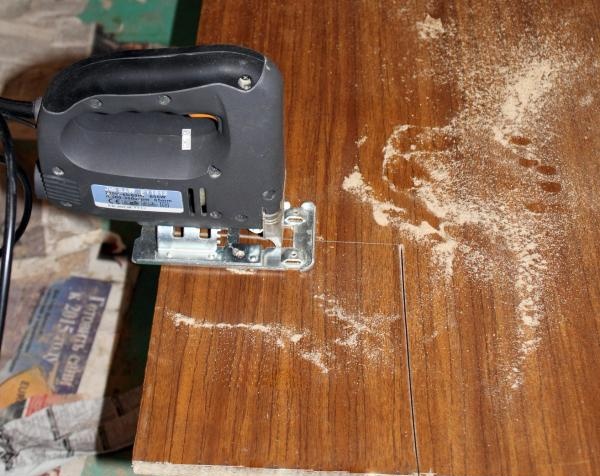
After all the parts are cut, you need to drill holes in them for connecting with confirmations. It's much easier to do this consistently. First you need to make holes in the shelf, and then drill through these holes corresponding to them in the supporting element. If there is no special drill for confirmations, then you need to use 3 ordinary drills with different diameters - for the screw part, the thickening and the head of the Euroscrew.

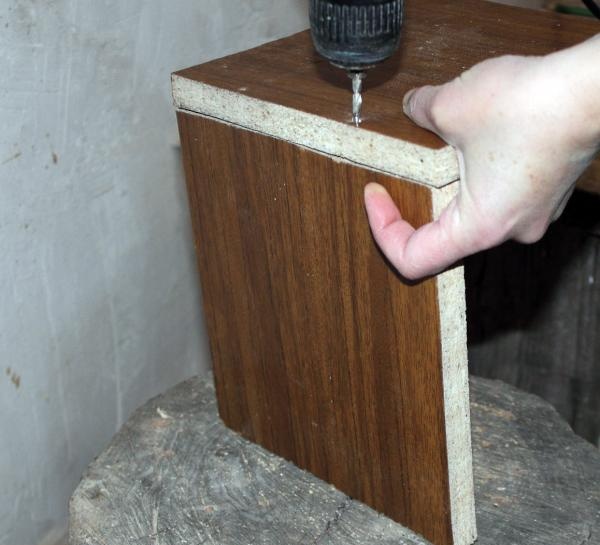
Immediately at this stage you can make holes for attaching the shelf to the wall. It will be fastened with 6x80 mm dowel nails through the supporting elements. All holes must be countersunk, this is necessary so that the nail head is flush with the surface.
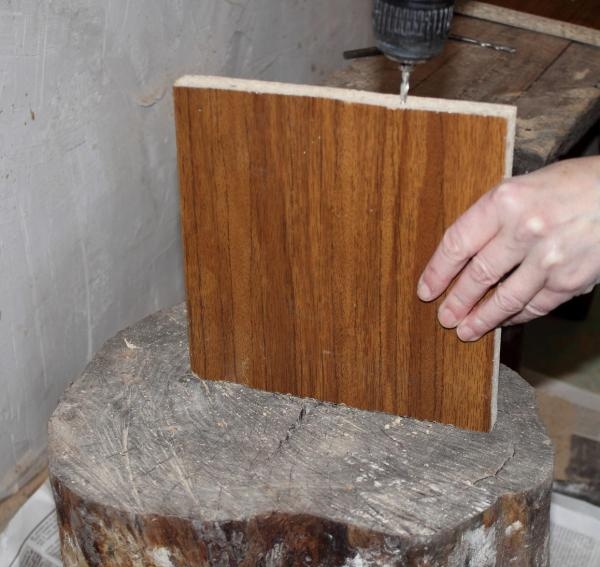
When all the parts have been cut, you can start decorating the edges. First, we clean all edges from dust and sawdust formed during sawing.Then we apply edging tape to the ends and, using a heated iron (preferably using an old, unused one), glue it to the open surfaces.
This trimming tape is produced in a standard width of 1.8 mm, and the thickness of the furniture board is only 1.5 cm, so part of the tape remains superfluous and must be removed. We cut off the excess part of the edge using a regular wallpaper knife.

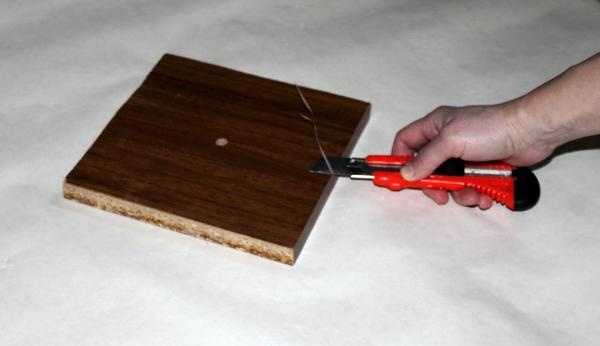
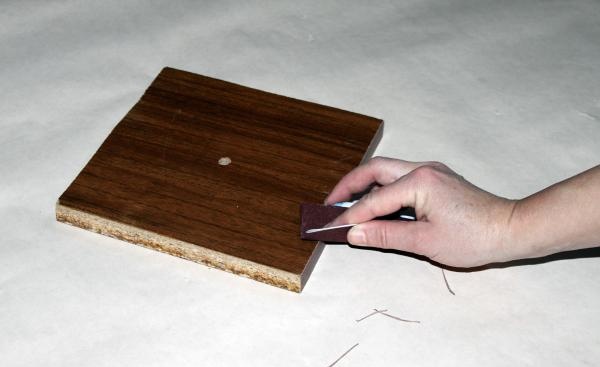
We clean the resulting edge with fine-grain sandpaper. You can close the ends with any other available method, for example, use decorative cord, braid, special paper or cardboard.
Now you need to assemble the shelf. We assemble in accordance with the numbered diagram. To tighten the confirmations, we use a hex wrench.
We try on the assembled structure in the place intended for it and mark the mounting points on the wall. For drilling in concrete or stone walls, we use a drill with a Pobedit tip. On the tip of the drill, you can pre-mark the drilling depth required for the prepared dowel. To prevent dust generated during drilling from flying around, you can glue a paper “pocket” to the wall under the work area.
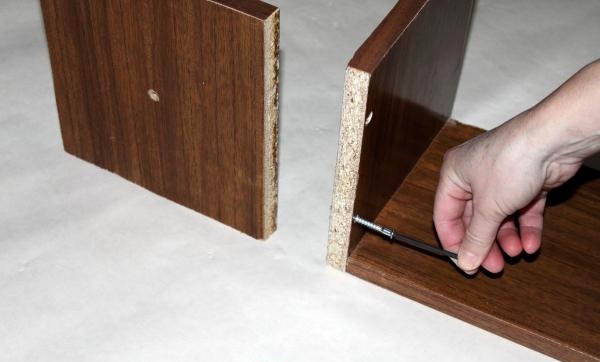
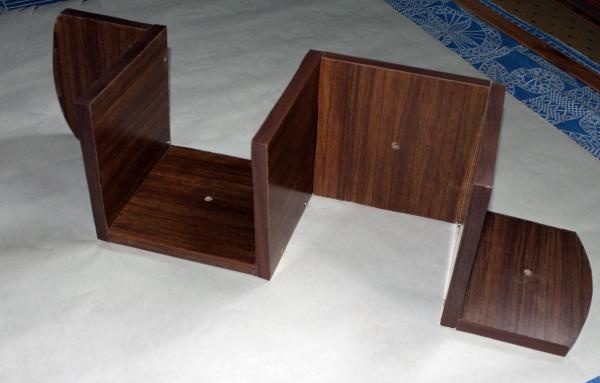
After completing the drilling work, you need to insert the dowels into the holes and secure it through the corresponding elements of the shelf with screw nails, recessing the caps. This can be done with a hammer or a regular Phillips screwdriver.

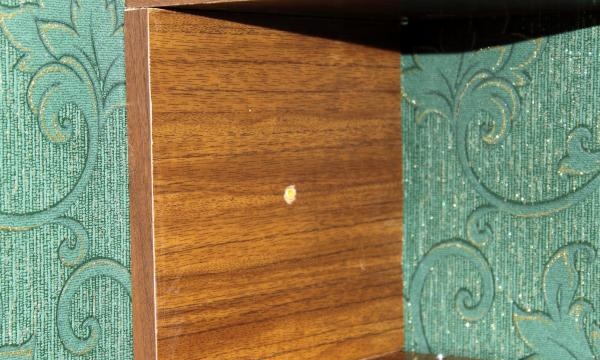
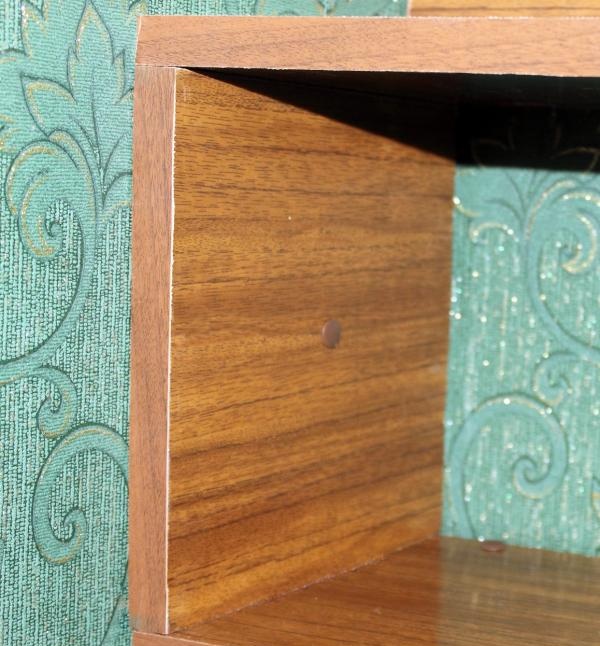
You can decorate the open heads of fasteners using special plastic plugs of a suitable color.
Perhaps such a shelf will turn out to be too simple in appearance, but we made it from materials that often gather dust in our pantry or live out their days in the country. The design can be changed at your discretion, for example, the supporting elements can be made longer and then the shelves can be used as book shelves.Or choose a different outline of the end parts, in which case the shelf will acquire additional decorativeness. In any case, a handmade item furniture will serve as an example of the individual skill of the owners of the house.
